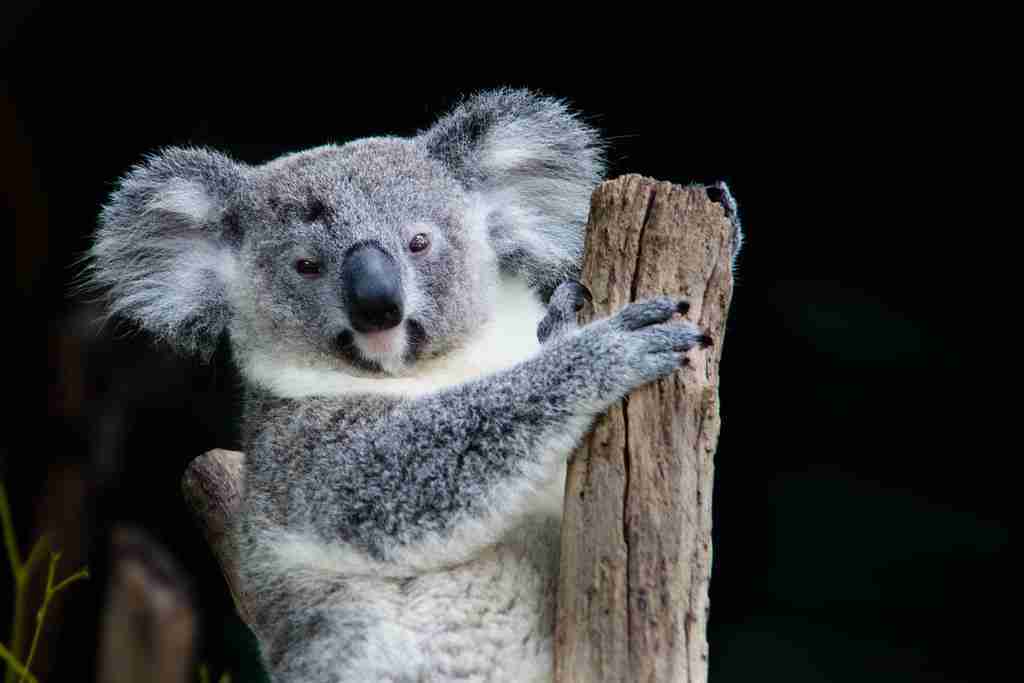25 Fun Facts About Koalas: The World’s Dumbest Cuties
1. Koalas are arboreal marsupials known for their teddy bear-like appearance.
Arboreal marsupials are a type of mammal that primarily live in trees and carry their young in a pouch, such as koalas. The term arboreal refers to the tree-dwelling lifestyle.
Koalas are instantly recognizable with their stout, tailless bodies, and large, black spoon-shaped noses. They have soft, gray fur that can range to light brown, and bright white fur on their chests and inner ears.
2. Koalas are native to Australia.
Koalas are truly Australian natives, making their homes exclusively in the eucalyptus forests of the continent.
These creatures are arboreal, which means they live most of their lives up in the trees. Their powerful claws and strong limbs help them climb and navigate this lofty world with ease.
3. Koalas are not bears, they’re marsupials.
Koalas, often mistakenly referred to as koala bears due to their teddy-bear appearance, are marsupials, a group of mammals quite distinct from bears.
A key characteristic of marsupials is the presence of a pouch for carrying young after birth.
4. Koalas spend up to 18 hours a day sleeping.
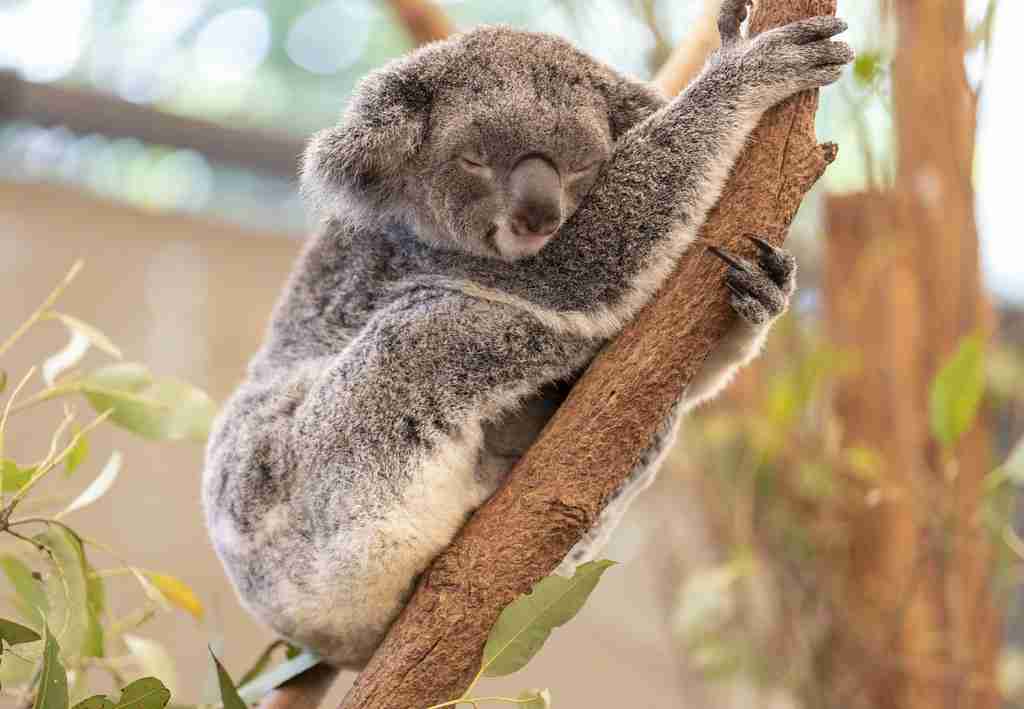
Koalas are champions of sleep, with their daily slumber stretching up to 18 hours. This extraordinary sleeping schedule is among the longest in the animal kingdom.
But it’s not all about laziness, this extensive downtime is an integral part of their lifestyle. In the safety of their treetop homes, koalas curl up and sink into a deep sleep, a sight as endearing as it is intriguing.
5. Koalas’ diet primarily consists of eucalyptus leaves.
Koalas are picky eaters with a palate that leans heavily towards eucalyptus leaves. These creatures are highly selective, dining almost exclusively on the leaves of this particular tree species.
Despite the sheer variety of trees in their habitat, koalas have developed a keen sense for the eucalyptus, favoring it above all others.
These leaves are low in calories and tough to digest but are rich in water and fiber, providing the koalas with hydration and aiding digestion.
6. During mating season, male koalas produce a loud call that sounds like a series of snores and belches.
In the mating season, male koalas make their presence known through a unique vocal display that sounds like snores and belches.
Far from being unappealing, this distinct call serves to attract females, signaling the male’s readiness for mating.
7. Koalas have a slow metabolism, which conserves energy.
Koalas are remarkable for their energy-conserving lifestyle, largely due to their slow metabolism.
Their metabolic rate, among the slowest in the mammal kingdom, is a critical adaptation to their nutrient-poor diet of eucalyptus leaves.
The slow processing of food allows them to maximize energy extraction from their tough diet. It also contributes to their extensive sleep schedule, as a slower metabolism means less energy for activity.
8. Baby koalas are called joeys, like other marsupials.
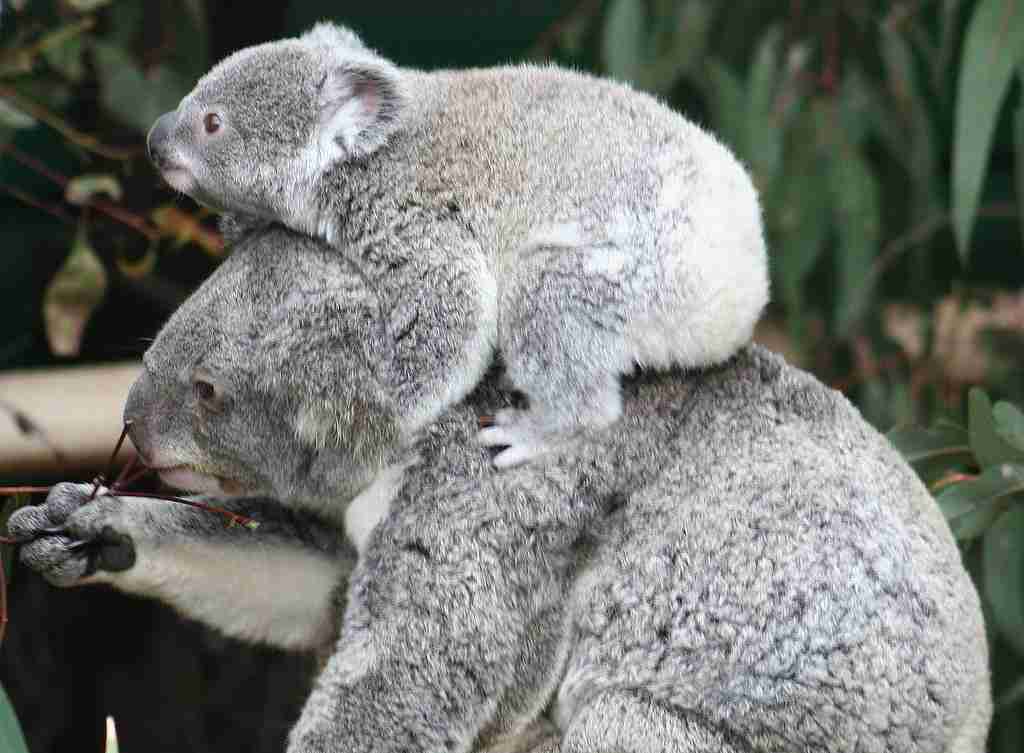
In the kingdom of marsupials, baby koalas share a cute moniker with their kangaroo cousins, they’re called joeys.
What’s fascinating about these joeys is their size at birth a newborn koala joey is merely about 2 centimeters long, no bigger than a jelly bean.
9. The average weight of adult koalas ranges from 4 to 12 kilograms.
Adult koalas usually weigh between 4 to 12 kilograms. This is just right for their life in the trees, as it allows them to move around easily without snapping branches. Males Koalas tend to be heavier than females.
10. Newborn Koalas live in their mother’s pouch for about six months.
When a koala joey is born, it finds haven in its mother’s pouch where it stays for about six months. This cozy spot provides the perfect environment for the tiny creature to grow and develop.
During this period, the joey is nourished by its mother’s milk and begins to form the distinct features of a koala.
11. Koalas have fingerprints that closely resemble human fingerprints.
koalas are one of the few animals besides humans to have fingerprints. Not just a vague similarity, but their fingerprints are remarkably alike to human ones, with intricate loops and whirls.
This feature aids them in their arboreal lifestyle, providing a firm grip and precise touch when navigating the tree branches.
12. Koalas have large noses, which are very sensitive to smell.
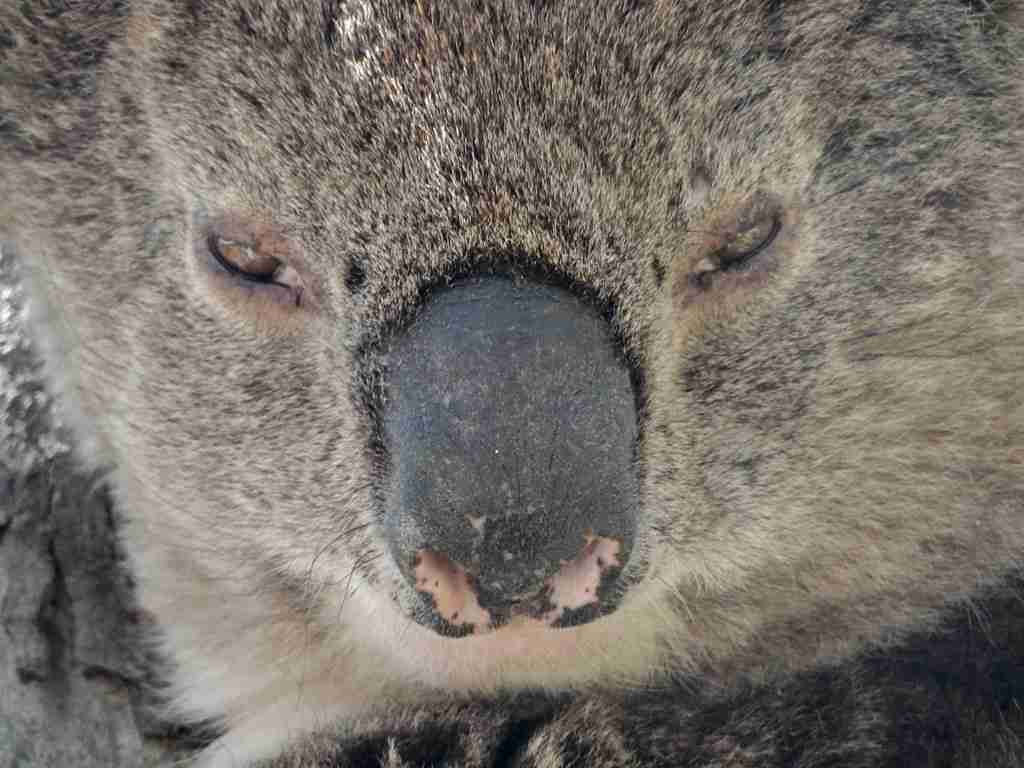
Koalas have large noses that are very sensitive. Their noses help them pick the best eucalyptus leaves to eat.
They can even smell which leaves have more water, which is helpful in dry seasons. So, a koala’s big nose is not just a cute feature, it’s a vital tool for their survival.
13. Baby koalas consume their mother’s feces.
Baby koalas, or joeys, eat their mother’s feces, and it’s actually a smart move for them. This helps them get the good bacteria they need for their stomachs to digest eucalyptus leaves later on.
So, while it might sound a bit gross, it’s nature’s way of making sure baby koalas grow up strong and healthy. It’s a clever trick that helps them survive in the wild.
14. Koalas’ fur is thick and woolly to keep them warm during cold nights.
The thick, woolly fur of a koala acts as an insulation layer, providing much-needed warmth during cold nights and acting as water-repellent.
This dense fur can protect them in temperatures as low as 5 degrees Celsius (41 degrees Fahrenheit).
Their fur isn’t just for show it serves as their heater, keeping them cozy even in the chill of the Australian winter nights.
15. Each koala’s home range consists of specific eucalyptus trees.
Every koala stakes out its personal space, known as a home range, populated by select eucalyptus trees.
They typically have 100 to 150 trees in their home range. These trees are not just their food source but also their refuge, highlighting the intimate relationship between a koala and its chosen eucalyptus trees.
16. koalas are often perceived as one of the dumbest animals.
Koalas, popularly viewed as dumb, have uniquely small brains for mammals. They exclusively prefer eucalyptus leaves, curiously ignoring them on plates but munching directly from trees.
Despite hygiene concerns that lead to diseases like chlamydia, their endearing appearance and Australian charm ensure they remain adored by many.
17. Koalas are mostly solitary animals but maintain loose social structures.
While they may seem like loners, koalas maintain loose social structures. They tend to stick to their own spaces but interact with others in overlapping territories.
On average, a koala’s home range may overlap with about 10 other koalas. These interactions, while not frequent, point to a subtle social dynamic that influences their daily life in the eucalyptus canopy.
18. Koalas communicate using a range of vocalizations.
Koalas have a language all their own, employing a variety of vocalizations to communicate with each other.
These sounds go from quiet purrs and snores when happy, to roars in mating season.
These vocal signals play an important role in expressing their moods, attracting mates, and establishing territory.
19. Koalas are primarily nocturnal and crepuscular.
Koalas are mainly active during the night and at dawn and dusk. This way, they avoid daytime heat, save energy and stay hydrated.
So, they have cleverly adapted their lifestyle to best suit their environment.
20. Koalas can live up to 10 to 15 years in the wild.
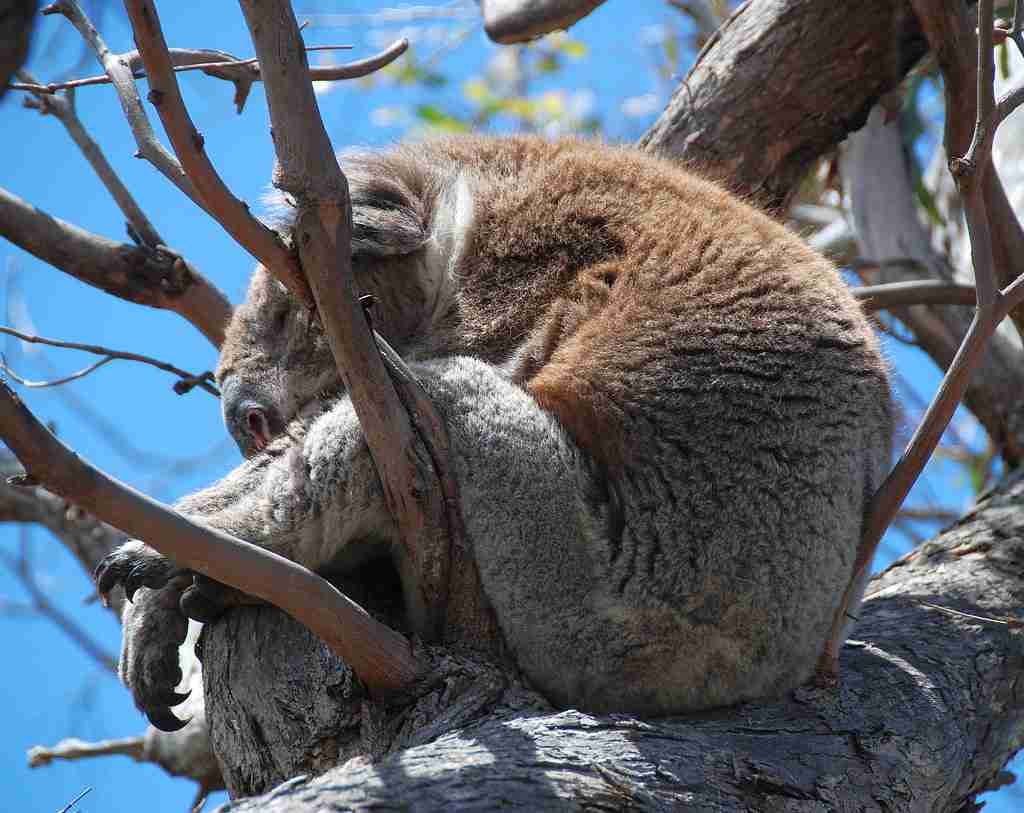
In the wild, koalas have a life expectancy of around 10 to 15 years. Their longevity is influenced by many factors, including diet, habitat, and the absence of threats like predators or disease.
During this lifespan, they contribute to the health and diversity of their eucalyptus forest homes, making each koala’s life vital for the overall ecosystem.
21. Koalas have a unique digestive organ, called a caecum.
Koalas possess a special digestive organ called a caecum, which is crucial to their unique diet. The caecum is up to 2 meters long and it’s where eucalyptus leaves are detoxified and broken down.
The presence of this organ allows koalas to consume eucalyptus leaves, which are toxic to most other animals.
22. The koala’s scientific name, Phascolarctos cinereus, means ash-colored pouched bear.
The scientific name for koalas, Phascolarctos cinereus, translates to ash-colored pouched bear.
While they’re not bears, this name reflects their bear-like appearance and the grey color of their fur.
23. The koala population has been majorly affected by habitat destruction.
The koala population has suffered greatly from habitat destruction. Deforestation and land clearing for urban development have led to the loss of many eucalyptus forests, which are the koala’s primary habitat.
24. There are three subspecies of Koalas.
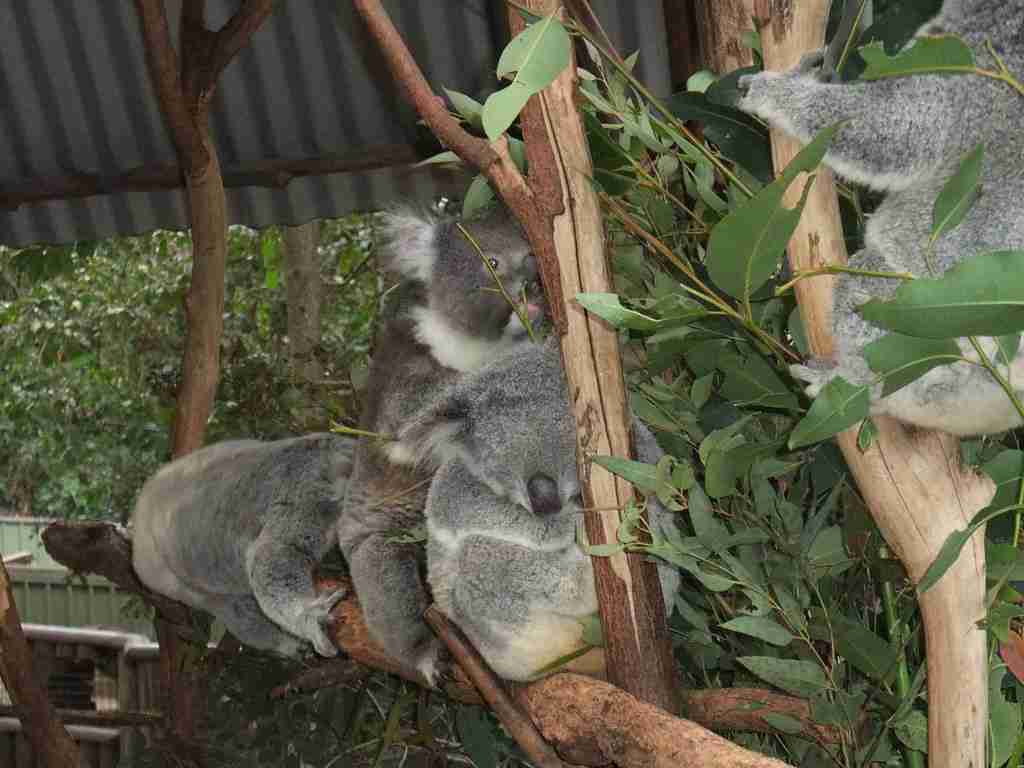
There are three subspecies of koalas, each adapted to different climates and regions in Australia.
These include the Queensland koala (Phascolarctos cinereus adustus), the New South Wales koala (Phascolarctos cinereus cinereus), and the Victorian koala (Phascolarctos cinereus victor).
25. Koalas may look cuddly, but their sharp teeth and claws can cause serious injuries.
Koalas, with their soft, grey fur and teddy bear-like appearance, may look harmless and cuddly. However, they possess sharp teeth and claws, features essential for their survival in the wild.
These tools allow them to tear through tough eucalyptus leaves and climb high into trees, but they can also inflict serious injuries if a koala feels threatened.
FAQs
Koalas are native to Australia. They primarily live in the eucalyptus forests of eastern and southeastern regions, including the states of Queensland, New South Wales, South Australia, and Victoria. Koalas live in these areas because eucalyptus leaves are their main source of food.
Koalas are medium-sized marsupials with grey fur, a plump body, and a round face with large, fluffy ears. They have a large black nose, sharp claws for climbing trees, and their eyes are relatively small. They have a pouch for carrying their young, similar to other marsupials.
No, koalas cannot be kept as pets. The law prohibits this worldwide, even in their native country, Australia. The only exceptions to this rule are recognized zoos, certain scientific researchers, and individuals who are rehabilitating injured, sick, or orphaned koalas.
Koalas are endangered primarily due to habitat destruction, climate change, and diseases like chlamydia. koalas were listed as Vulnerable on the IUCN Red List. Precise population numbers are hard to estimate due to the koala’s wide distribution across Australia, but some estimates suggest there may be as few as 43,000 to as many as 100,000 koalas left in the wild. Koalas are endangered primarily due to habitat destruction, climate change, and diseases like chlamydia.
While often referred to as a koala bear due to its teddy bear-like appearance, the koala is not a bear at all. It’s a marsupial, which is a category of mammals characterized by carrying their young in a pouch. This common nickname can be misleading, as it doesn’t accurately reflect the koala’s true biological classification.

